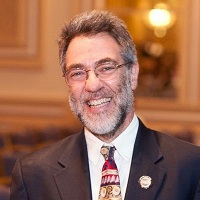 William Hersh, MD, Professor and Chair, OHSU
William Hersh, MD, Professor and Chair, OHSU
Blog: Informatics Professor
Twitter: @williamhersh
Another couple of studies have been published documenting the amount of time physicians spend with computers in primary care and ophthalmology clinics. Clearly these and other recent studies show that physicians spend too much time with the electronic health record (EHR), especially when phrases like “pajama time” enter into the vernacular to refer to documentation that must take place after work at home because it could not be completed during the day.
But one aspect of these studies that has always concerned me is that there is no measure of what is the appropriate amount of time for physicians to spend not in the presence of the patient. This includes tasks like reviewing data that will help inform making current decisions as well as entering data that other team members caring for the patient will use to inform their decision-making. While some dispute the value of our current approaches to measurement of quality of care delivered, I believe that most physicians accept there should be some measure of accountability for their decisions, especially given the high cost of care. This means that some time and effort must be devoted by physicians to measuring and improving the quality of care that they deliver.
The newest time-motion study from primary care once again reiterates the large amount of time that the EHR consumes of the physician day. In this study, that time was found to be 5.9 hours of an 11.4-hour workday and 1.4 hours after hours. But if we look at the tasks on which this time was spent (Table 3 of the paper), we cannot deny that just about all of them are important to overall patient care, even if too much time is spent on them. Do we not want physicians to have some time for reviewing results, following up with patients, looking at their larger practice, etc.?
I have noted in the past that physicians have always spent a good deal of time not in the presence of patients. I have cited studies of this that even pre-date the computer era, but someone recently pointed me to an even older study from 1973. In this study of physicians in a general medicine clinic, 103 physicians were found to spend 37.8% of their time charting, 5.3% consulting, 1.7% in other activities, and the remaining 55.2% of time with the patient. So even in the 1970s, ambulatory physicians spent only slightly more than half of their time in the presence of patients. As one who started his medical training in that era, I can certainly remember time spent trying to decipher unreadable hand-writing as well as trying to track down paper charts and other missing information. I also remember caring for patients with no information except for what the patient could recollect.
Clearly we have a great deal of work to do to make our current EHRs better, especially in streamlining both data entry and retrieval. We also need to be careful not to equate measures like clicks and screens with performance, as a study from our institution found that those who efficiently navigated the most information in the record achieved the best results in a simulation task. What we really need is studies that measure time taken for information-related activities in physician practice and determine which are most important to optimal patient care. Further research must also be done to optimize usability and workflow, including determining when other members of the team can contribute to overall efficiency of the care process.
This article post first appeared on The Informatics Professor. Dr. Hersh is a frequent contributing expert to HITECH Answers.
